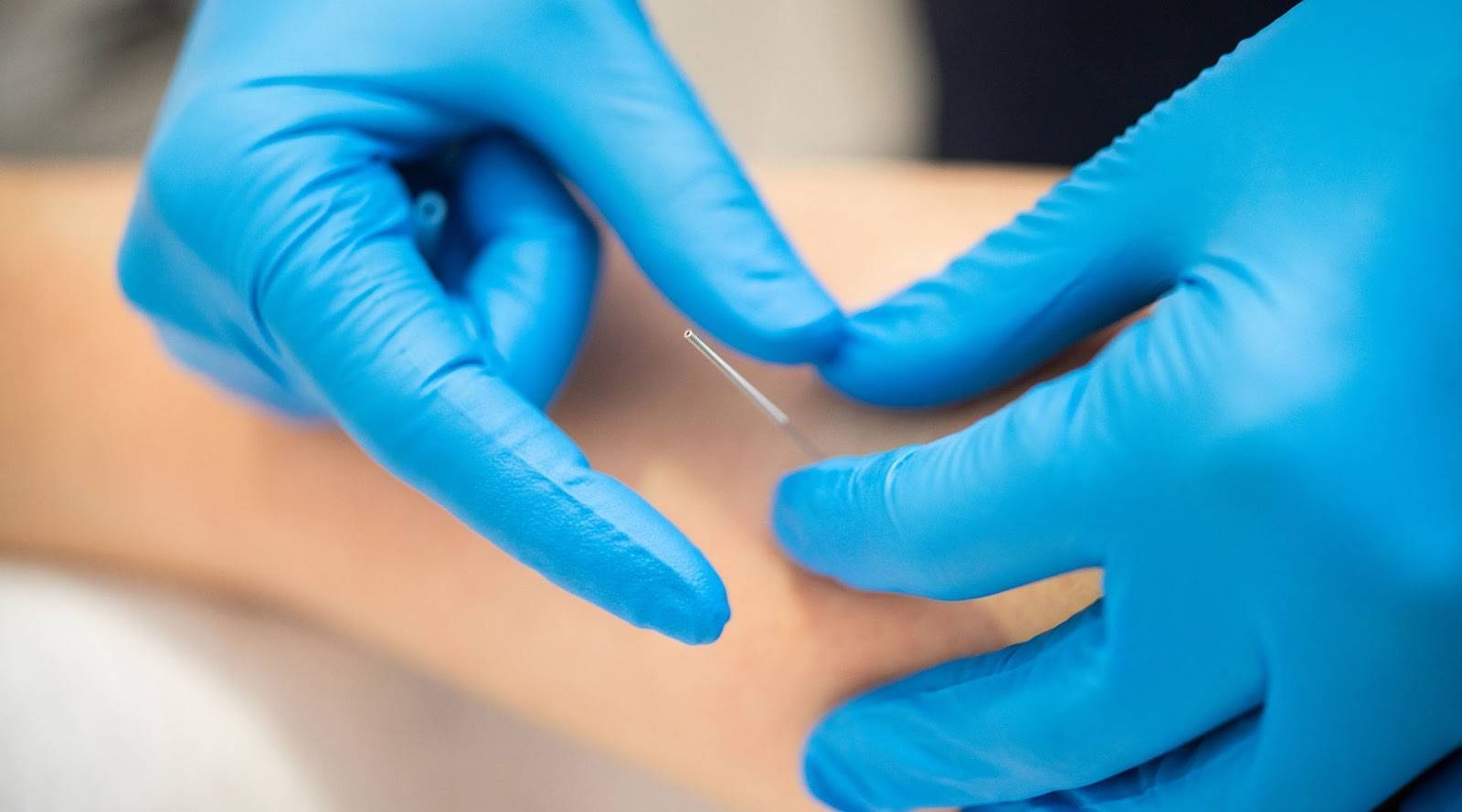Will Dry Needling Help Tennis Elbow?
Dry needling is a therapeutic technique that uses fine needles to address myofascial trigger points, which are knots of muscle that restrict motion, cause discomfort or tenderness when touched, or refer pain elsewhere. Needles penetrate the skin and gently stimulate a trigger point, allowing blood to move more freely through tissue. This improves oxygenation and nutrient supply, helping your muscles heal more quickly.
How Does Dry Needling Work?
Dry needling is a physical therapist-only treatment used to alleviate pain and movement issues. It’s similar to acupuncture but doesn’t involve injecting drugs into your body. Thin needles are inserted through your skin and into muscle tissue, with the goal of healing the muscles and nerves causing pain.
During a session with your physical therapist, they will insert a needle into your myofascial trigger point to relax it and promote blood flow to the site. When this needle hits your trigger point, surrounding muscles twitch in response – helping your body relax while relieving muscle pain.
Dry needling has been found to be more effective than first-line treatments such as ibuprofen and a counterforce brace in relieving pain from tennis elbow. A study of 110 patients with tennis elbow revealed that those who received dry needling experienced greater relief at six months than those on first-line treatment.
What Will I Feel During Dry Needling?
Dry needling is a technique utilized by physical therapists to treat myofascial pain syndromes. It involves inserting thin needles into muscles and trigger points to relieve discomfort, promote movement, and reduce stress on joints and soft tissues.
Myofascial pain can be treated safely, minimally invasively and effectively with this procedure. Your practitioner will use ultrasound guidance to accurately guide the needle into your painful area. Your practitioner will also administer a small amount of local anesthetic to the area before repeatedly passing the needle through your injured tendon, creating small bleeds and stimulating your body’s healing response.
This process can dramatically release trigger points and stimulate motor points in muscles, fascia, and tendons. This causes your body to relax, allowing blood flow more easily while flushing out lactic acid and other toxic by-products. Furthermore, tendonosis sufferers may find this process speeds healing time while decreasing inflammation.
How Long Will Dry Needling Take?
Dry needling has been shown to provide effective short-term pain reduction, possibly more so than cortisone injections. However, for long-lasting relief, a comprehensive treatment plan is necessary.
Physical therapists usually perform this treatment, which entails inserting a thin monofilament needle into the skin to target trigger points that cause neuromusculoskeletal pain and movement impairments. After injection, beneficial chemicals rush into the area, relieving pain and sensitivity while increasing blood flow to the injured area. This can speed healing and recovery for patients.
Tennis elbow and golfer’s elbow can both benefit from this approach to treating symptoms. It usually forms part of a comprehensive treatment program that includes manual therapy, strengthening/mobilization exercises to address the underlying cause of the problem.
What Can I Expect After Dry Needling?
Physical therapists may use dry needling as part of a treatment plan to help reduce pain and enhance movement. It can be used on its own or combined with other therapies like joint mobilization and strengthening exercises.
When needles are inserted into a trigger point, it may cause nearby muscles to twitch in response. These spasms help stiff muscles relax and blood flow increases to the area.
Furthermore, chemical mediators released during the procedure reduce pain and inflammation, promote healing, and improve circulation to injured tissue. As such, it’s considered a holistic approach to pain management and can be combined with other treatment methods for maximum benefit.
After a dry needling session, patients may experience some soreness at the needle sites; however, this usually subsides within 24 hours and no bruising should occur. Ice can also be applied to soothe any tender points on your body.
If you’re interested in learning more about dry needling or other physical therapy services, feel free to contact us to schedule an appointment with our team of specialists.



